Table of contents
- MOTORCYCLE travel tips: the 10 best passes of the Pyrenees Experience the mountain range between France and Spain
- 1st place: Col du Pourtalet
- 2nd place: Col du Tourmalet
- Place 3: Col de Somport
- 4th place: Col de Peyresourde
- 5th place: Col de la Pierre St. Martin
- Rank 6: Port del Cantó
- Rank 7: Port De Larrau
- 8th place: Port d’Envalira
- 9th place: Puerto de Cotefablo
- Place 10: Col de Pailheres
- Info
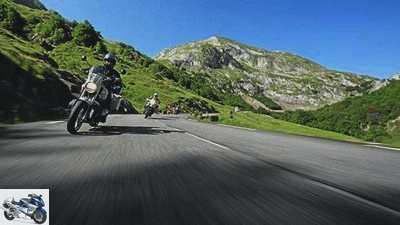
shepherd
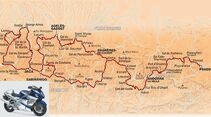
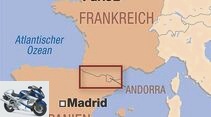
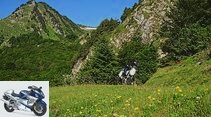
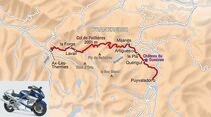
25th pictures
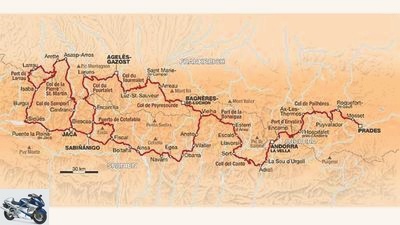
shepherd
1/25
The routes on the Spanish side are often better developed, while the French side is more winding and adventurous.
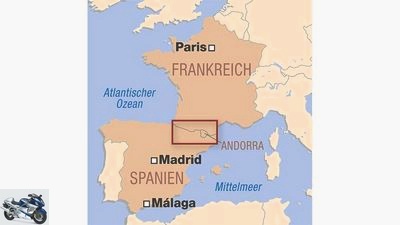
shepherd
2/25
The 10 best passes in the Pyrenees.
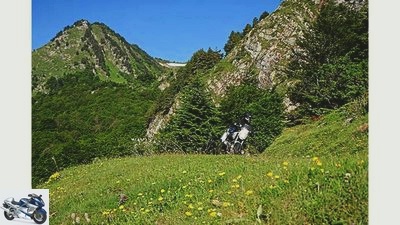
shepherd
3/25
Col de Pailheres – Fun for advanced: The pass is bare, unpredictable, little traveled.
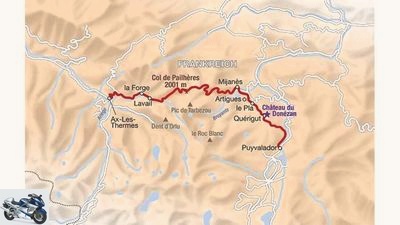
shepherd
4/25
Col de Pailheres – no cafe, little view, lots of flair.
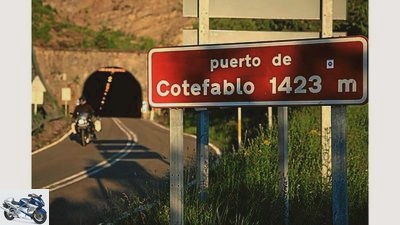
shepherd
5/25
Puerto de Cotefablo – endless curves.
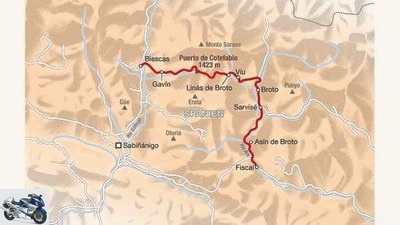
shepherd
6/25
Puerto de Cotefablo – if you drive this curve-intensive pass with ambition, you can save yourself the gym.
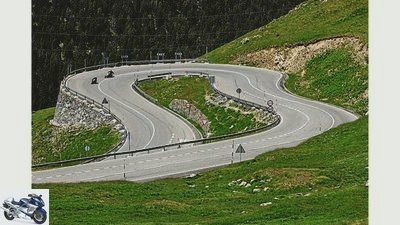
shepherd
7/25
Port d’Envalira – enough space for a perfect line.

shepherd
8/25
Port d’Envalira – the greatest fun is early in the day when the Andorra tourists are still sleeping.
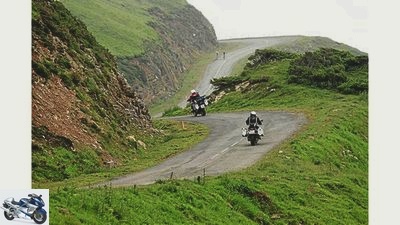
shepherd
9/25
Port de Larrau – variety guaranteed, beautiful curves, old towns.
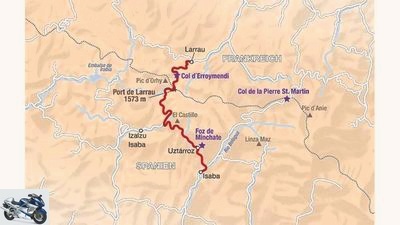
shepherd
10/25
Port de Larrau – the pass with two faces.
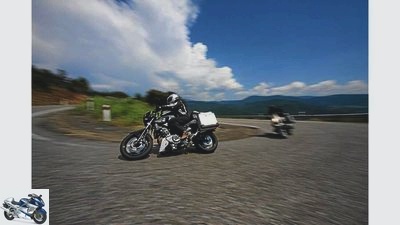
shepherd
11/25
Port del Cantó – an unforgettable cornering paradise.
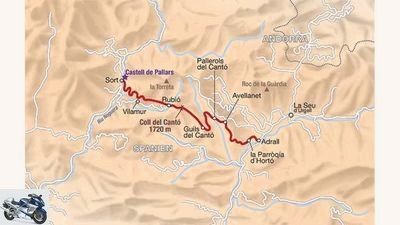
shepherd
12/25
Port del Cantó – if only it had a view.
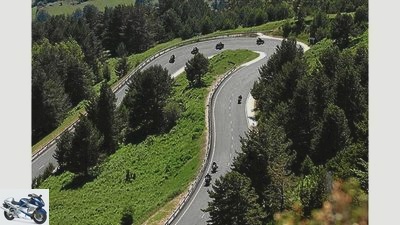
shepherd
13/25
Col de la Pierre St. Martin – watch out, because the Pierre St. Martin suddenly changes between relaxed and very winding passages.
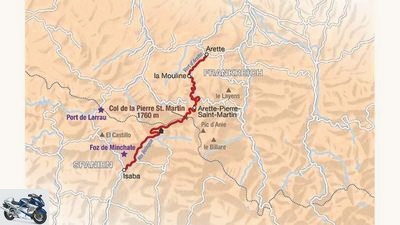
shepherd
14/25
Col de la Pierre St. Martin – requires increased vigilance.
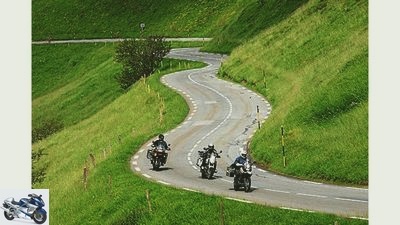
shepherd
15/25
Col de Peyresourde – connoisseur pass with fast sections.
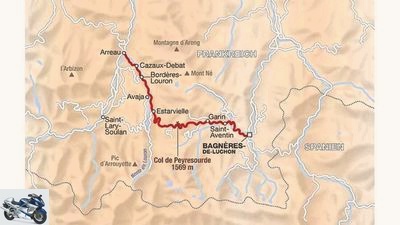
shepherd
16/25
Col de Peyresourde – Tip: Stop at the creperie on the top of the pass and eat pancakes.

shepherd
17/25
Col de Somport – A pass with little traffic.
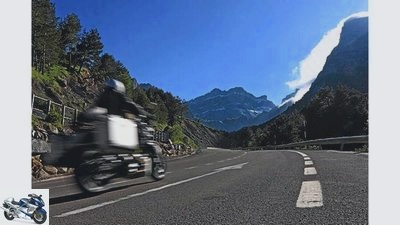
shepherd
18/25
Col de Somport – The best panorama of the northern Pyrenees ridge can be seen behind the old border system.
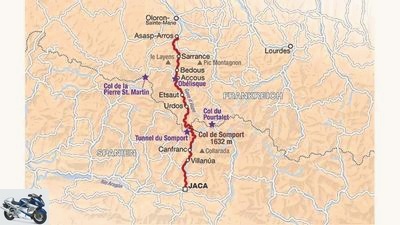
shepherd
19/25
Col de Somport – The disused train station at Canfranc-Estacion is worth the photo break.
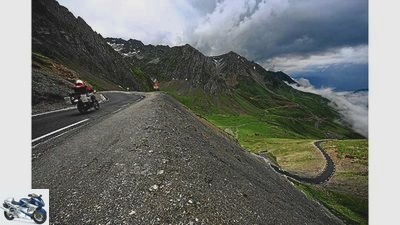
shepherd
20/25
Col du Tourmalet – In the Tour de France he separates the wheat from the chaff.
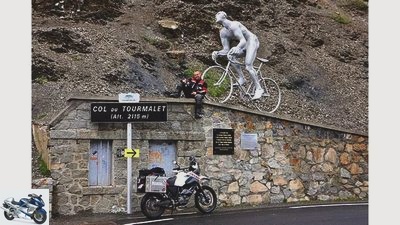
shepherd
21/25
Col du Tourmalet – Tip: The Tour de France interior of the bar at the top of the pass is worth a look and the menu is more than worth a try.
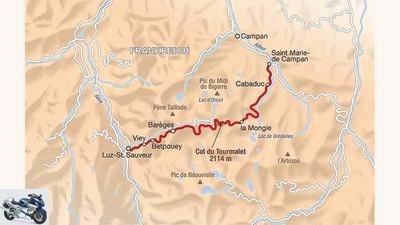
shepherd
22/25
Col du Tourmalet – has that certain something that you expect from a proper pass.
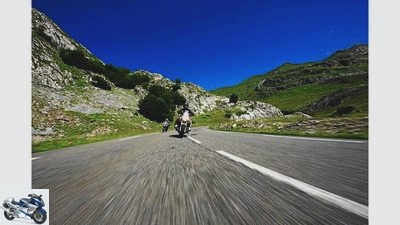
shepherd
23/25
Col du Pourtalet – driving and scenic ingenious.
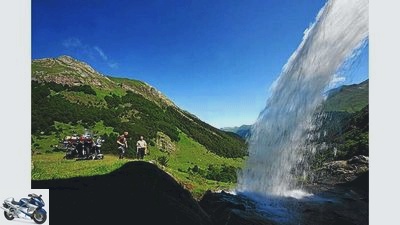
shepherd
24/25
Col du Pourtalet – very beautiful pass, even if it is not the highest.
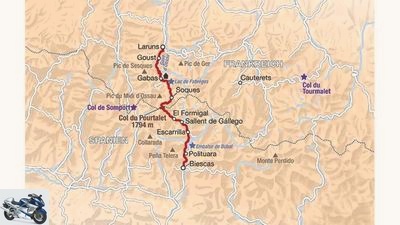
shepherd
25/25
Col du Pourtalet – has truly earned 1st place.
to travel
Route guide: The best passes in the Pyrenees
MOTORCYCLE travel tips: the 10 best passes of the Pyrenees
Experience the mountain range between France and Spain
What does the cornering paradise between France and Spain offer? MOTORRAD presents the best passes of the 400-kilometer mountain range at a glance.
Dirk Schafer
03/03/2011
Come on, let’s start – and upwards! This is how you could translate the title of this Pyrenees Pass hit parade. So follow us up into the wild mountains that stretch 400 kilometers from the Atlantic to the Mediterranean and separate France from Spain. As an island in the middle of it lies the miniature state Andorra. Around 200 Pyrenean peaks extend over 3000 meters. The mountains are a real alternative to the Alps on both the French and Spanish sides with their natural originality and little traffic.
Buy complete article
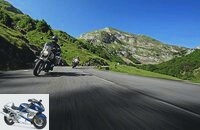
MOTORCYCLE travel tips: the 10 best passes of the Pyrenees
Experience the mountain range between France and Spain
12 pages) as PDF
€ 2.00
Buy now
We start our round in Prades, a place on the southwestern edge of the Pyrenees, 111 kilometers from Narbonne, where the car train arrives. In addition to the top ten presented here, there are far more passes waiting for adventure-hungry bikers than can be conquered on holiday.
1st place: Col du Pourtalet
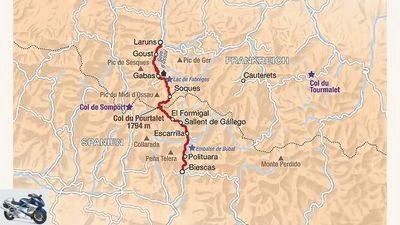
Werel
No one offers more variety in the Pyrenees – it rightly ranks first.
Even if it is not the highest, no one in the Pyrenees offers more variety. A short stage with tight serpentines, then quickly developed curves followed by angled rocky passages and refreshing high valleys. The Col du Pourtalet surprises you around every corner, and the view of the pass is indescribable. The top spots – not just of the Col du Pourtalet, but of the entire Pyrenees – include the Dents du Midi, a striking rock group that rises from the surrounding mountains north of the pass. If you want to enjoy the view undisturbed, surf the asphalt a little on the Spanish side down into the valley. At the dam of the Embalse de Lanuza there is a magnificent panorama. The pure A-136 then makes the descent towards Biescas to a crisp finale. Heart, what do you want more?
Our tip: Break on the French side of the pass summit. There is less hype here and the view is better than across the border.
Length: 56 kilometers.
Altitude: 1794 meters.
Opening times: Info phone 05/5905/3141.
Maximum gradient: 8 percent.
Special features: The big hum under the Pyrenees passes.
2nd place: Col du Tourmalet
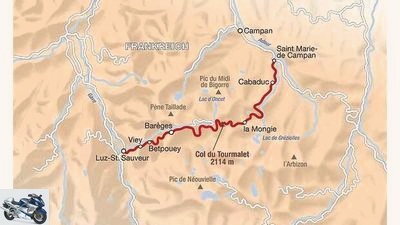
Werel
Height, fascinating landscape and a pinch of adventure help him to place 2.
In the Tour de France, it separates the wheat from the chaff: the Col du Tourmalet. And even when crossing the Pyrenees by motorcycle, he has that certain something that you expect from a proper pass: altitude, fascinating landscape and the pinch of adventure that makes you happy to have packed another pass with a strong character. The Tourmalet is long stingy with its charms when approaching from the east. Only after a gallery that protects against violent falling rocks does the challenge come. The pavement becomes rougher, the road has to bend to the constraints of a furious high mountain range. A small car park just behind the Tour de France monument. Unfold the side stand, advance to the edge of the break-off and take a deep breath! “New Zealand? Wild Land probably best fits what you see now. And in the middle of this splendid piece of landscape meanders a kind of single-lane Carrera track where all straight lines have been forgotten.
Length: 35 kilometers.
Height: 2115 meters.
Opening times: May to November.
Maximum gradient: 10 percent.
Special features: The Tour de France classic.
Place 3: Col de Somport
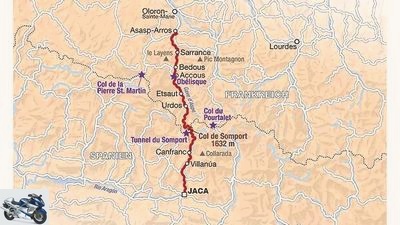
Werel
Connects France to Spain – one of the classics and therefore 3rd place.
Many passes in the Pyrenees connect France with Spain. The Somport is one of the classics. Which doesn’t mean it’s boring. On the contrary: The Iberian part in particular is in top condition and is just as much fun with superbikes as with tourers or enduros. The uphill stretch makes overtaking easier with three-lane passages. In general, however, there is little traffic, as the eight-kilometer tunnel de Somport has been crossing under the pass since 2003. The Somport remains fast until shortly before the top of the pass. You have to be careful not to rush past the cafe in front of the border. Behind the old border system, the route disappears into the woods towards Oloran-Ste Marie.
Our tip: The disused train station at Canfranc-Estacion is worth the photo break.
Length: 62 kilometers.
Height: 1632 meters.
Opening times: all year round.
Maximum gradient: 9.5 percent.
Special features: One of the oldest Pyrenees passes.
4th place: Col de Peyresourde

Werel
The pass for connoisseurs, our 4th place.
It is not terribly high, nor is it hair-raising. Nevertheless, the Peyresourde is an indispensable part of Tour de France history, nor is it without claim. It simply has a different character and is aimed at connoisseurs, even if it sometimes tempts you to heat. As soon as the traffic from the eastern starting point Bagneres de Luchon ebbs in the rearview mirror, the D 618 winds promisingly through a high valley. The higher the route, the more entertaining the pass becomes. The hairpin bends below the top of the pass catch the eye from afar. They have fun overcoming the last few meters to the rustic wooden house on the top. As you continue to Arrau you can take a deep breath. A wonderfully rambling valley with green slopes and a wide view makes the remaining kilometers a wonderfully calm affair.
Length: 33 kilometers.
Altitude: 1569 meters.
Opening times: all year round.
Maximum gradient: 9 percent.
Special features: Almost new road surface on the east side.
5th place: Col de la Pierre St. Martin
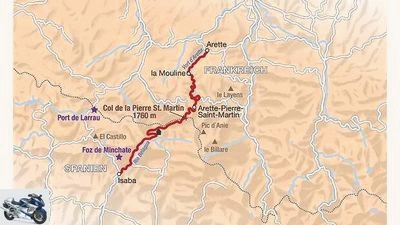
Werel
Watch out, because the Pierre St. Martin suddenly changes between relaxed and very winding passages, our place 5.
This pass has three ends: in Isaba on the Spanish side and with Larrau and Arette two in France. The more exciting driveway is that of Larrau. Take it easy along the Gave de Larrau so as not to miss the junction onto the D 113 and to St. Engrace. The landscape is mountainous, fertile and lonely. The route initially prevents driving capers. That changes at the Col des Suscousse. Now it gets woody, winding and sometimes almost hooked. At the junction with the D 132 the picture changes again. The road gets wider, the pavement is smoother, and you drive a lane clearer. But be careful: Don’t let yourself be lulled, because the route suddenly turns right on a confusing knoll. A longer straight is ended abruptly by a sharp left turn with a steep incline. After the transition to Spain, the situation eased.
Our tip: From Isaba continue to Port de Larrau (7th place).
Length: 52 kilometers.
Altitude: 1760 meters.
Opening times: all year round.
Maximum gradient: 11 percent.
Special features: Requires increased vigilance.
Rank 6: Port del Cantó
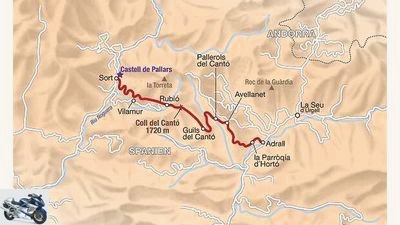
Werel
If only he had a chance! But he doesn’t. That’s why “only” Rank 6.
If only he had a chance! But he doesn’t. And you probably won’t be able to remember the apex of the route either. So why is this useless Pass in sixth place in the Pyrenees charts? Because it offers incomparable cornering experiences. It does not matter whether you approach Cantó from the western Sort or from the eastern Adrall. The entrance is always a matter of serpentines. Some curves turn back more than 180 degrees. But they are only the prelude to more than 40 kilometers of the best driving pleasure on top-quality road surfaces. Lots of fast corners, grip to the point and hardly any through-town traffic, simply awesome! Even reticent natures run the risk of letting the footpegs scrape across the asphalt halfway through.
Our tip: Go rafting on the Noguera Pallaresa in Sort.
Length: 45 kilometers.
Height: 1725 meters.
Opening times: April to November.
Maximum gradient: 7 percent.
Special features: The addicting route for curve junkies.
Rank 7: Port De Larrau
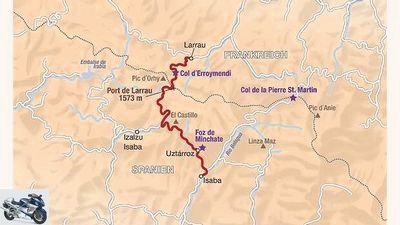
Werel
Variety guaranteed – the Port de Larrau is a pass with two faces, our place 7.
The Port de Larrau is a pass with two faces: on the Spanish side, it whirls carefree upwards, from Isaba it then zigzags through shady forests. When the trees are left behind after the change to NA-2011, the distant view of the Pyrenees peaks is fun. After a lonely bend below the top of the pass, the asphalt strives directly towards the ridge. To disappear into it, because the top of the Port de Larrau lies in a tunnel. At the end of this, the road bends jaggedly to the left. Now you can already guess that the light-heartedness has an end. As soon as you have reached the border with France, the route becomes bumpy to rough. But the landscape goes one better, and with the Col de Erroymendi a second pass is sent into the race. With a fat 16 percent gradient, he wants to know everything about the brakes again.
Our tip: Break in Laugibar.
Length: 38 kilometers.
Altitude: 1573 meters.
Opening times: April to November.
Maximum gradient: 16 percent.
Special features: The top of the pass is in a tunnel.
8th place: Port d’Envalira
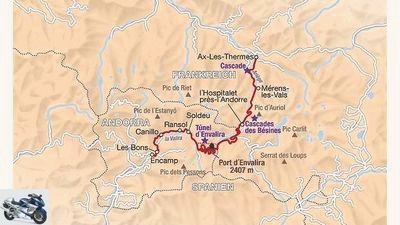
Werel
Not always fun because the pass is the gateway to the shopping paradise Andorra and is therefore often too full – it is only enough for 8th place.
The route over the Port d’Envalira is not always fun because the pass is the gateway to the shopping paradise Andorra and is therefore often too crowded. Solution: Set off very early in the morning, then enjoyment is guaranteed. A valley stretches stubbornly south from Ax-les-Thermes. The incline is moderate and the fresh morning air wakes you up for the next cornering. The time has come five kilometers before the junction to Col de Puymorens. On good asphalt, the tire flanks are warmed up in six turns. After the border crossing to Andorra, you cross the Pas de la Casa, and then it is: free passage! From now on there are often three lanes that leave space for a good line. Even beyond the top of the pass, the terrain remains clear.
Our tip: The brave can bypass the annoying Andorra la Vella via the Coll de la Botella, which is graveled on the Spanish side.
Length: 56 kilometers.
Height: 2408 meters.
Opening times: May to October.
Maximum gradient: 9 percent.
Special features: The highest Pyrenees pass.
9th place: Puerto de Cotefablo
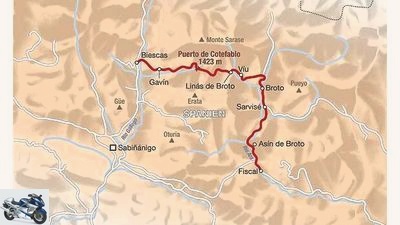
Werel
Those who ambitiously drive this curve-intensive pass can save themselves the fitness studio, our 9th place.
Another one with the top of the pass in the tunnel. Otherwise, curves without end, almost like the Port de Cantó, but narrower and less brisk. You have a lot to do on the handlebars: clutch, shift, accelerate, brake without interruption. The quality of the asphalt varies, but the grip is good and the pass is never uncomfortable. Attention: The respective tunnel exits turn off immediately and can hardly be calculated when the sun is shining.
Our tip: Follow the junction to Torla and visit Ordesa National Park.
Length: 42 kilometers.
Height: 1423 meters.
Opening times: April to November.
Maximum gradient: 8.5 percent.
Special features: Very curvy throughout, mostly good surface.
Place 10: Col de Pailheres
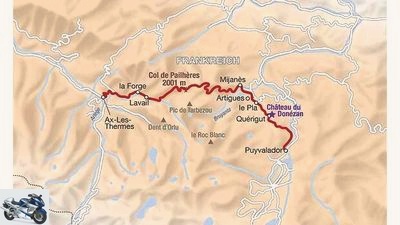
Werel
What here “only” the number ten is ahead of a bunch of other routes.
Olala. What here “only” the number ten is ahead of a bunch of other routes. In Usson-les-Bains the starting signal for the fine road is given. It winds up the mountain, rumbling along short intermediate straights until a massive rock wall further restricts the already not lush road width. Shortly afterwards, a serpentine system sticks to the slope, which will force many bikes into first gear.
Our tip: Buy road supplies on the west ramp just before the pass.
Length: 31 kilometers.
Height: 2001 meters.
Opening times: May to October.
Maximum gradient: 12 percent.
Special features: Little infrastructure, rough charm.
Info
General
We tried to lay our pass route in such a way that one lap is possible. How to get there: Depending on the starting point in Germany, the Pyrenees are between 1000 and 1800 kilometers away. In France there is a toll on motorways. As an alternative to traveling on your own, the DB Autozug travels from several German train stations to Narbonne on the French Mediterranean coast (www.dbautozug.de). For both the French and the Spanish side, third-order roads increasingly demand suspension and oncoming traffic can only be passed with a sense of proportion. Note on the passes: The Col d‘Aubisque is one of the highlights of the region, along with Pourtalet and Tourmalet. During our trip it was so foggy that it could not be rated.
The review
In order to present the character and overall perception of the individual passes in a sufficiently differentiated manner, but not too complicated, the following disciplines were assigned on a scale from one to ten points: general driving fun, adventure factor in slow and fast corners (can vary greatly), general impressions of the landscape and the impression of the top of the pass, where you usually stop for a moment because it represents the geographical goal of driving through the pass. The evaluation arises from the finest possible observation, but ultimately subjective impressions and can be discussed.

shepherd
A low-traffic pass. A breathtaking panorama – what could be more beautiful?
Travel time
Late spring, summer and early fall. The specified opening times for the individual passes may vary from year to year depending on weather conditions. Information on this is available from the automobile clubs or the tourist offices (see addresses). During the French and Spanish holiday seasons, some top spots are sometimes overcrowded. Andorra and the Tour de France classic passes are one of them. In the summer months, especially in the Spanish lowlands, temperatures can be up to 40 degrees. Increased bicycle traffic on the Tour de France routes.
accommodation
The Villa du Parc by Mireike and Oliver Zehner in Prades (www.villa-du-parc.com) has become an institution in the Pyrenees. On the north side of the Col du Pourtalet, we recommend the Hotel Pourtalet with a wonderful view of the Pic du Midi dOssau (www.hotelpourtalet.fr).
cards
The Via Michelin maps 573 and 574 for northern Spain on a scale of 1: 400,000 also cover the French side of the Pyrenees for 7.80 euros. More precisely: Michelin maps 524, 525 and 526 for France’s share of the Pyrenees (€ 8.80 per map).
Addresses
Information on winter closing times, accommodation and the Pyrenees in general:
www.moto-aventura.com
www.tourismus-midi-pyrenees.de
www.pyreneesguide.com
www.iberianature.com
www.lespyrenees.net
annotation
Travel time: 16 days
Distance covered: 1400 kilometers
Related articles
-
On the go: the 10 best alpine passes in France
Lengwenus 25th pictures Werel 1/25 The route over the Col de Vars. Lengwenus 2/25 Place 10: Col de Vars – Length: 34 kilometers • Height: 2109 meters •…
-
On the go: the best passes in Austria
bull 25th pictures bull 1/25 Place 9: Nassfeld Pass – The landscape and route of the Passo di Pramollo are attractive, but the poor asphalt often draws…
-
On the go: the best alpine passes in Italy
Breakable 30th pictures Breakable 1/30 The route over the Sella Joch. Breakable 2/30 3rd place: Passo di Gavia – The pass is an alpine pleasure trip, not…
-
The ten best alpine passes in Switzerland
Drawing: Hornig 29 pictures Breakable 1/29 The Bernardino spoils you in parts with curves that you don’t want to drive just once (here in the southern…
-
PDF download The best passes in Europe
Breakable Sports & scene PDF download The best passes in Europe PDF download The best passes in Europe That fits! The number 1 motorcycle area in Europe…
-
The 10 most beautiful German alpine roads
shepherd 22nd pictures shepherd 1/22 The route – length: 23 kilometers • altitude: 894 meters • maximum gradient: five percent • no tolls • special…
-
Alpine passes in northern Italy: the forgotten passes
Breakable 18th pictures Breakable 1/18 1st place: Passo del Vivione – Length: 57 kilometers • Height: 1827 meters • Opening times: May to October •…
-
Motorcycle trip in the Pyrenees
shepherd 33 pictures shepherd 1/33 Motorcycle trip in the Pyrenees – From the Mediterranean to the Atlantic. shepherd 2/33 Air sovereignty: Giant…
-
Deleker 14th pictures Deleker 1/14 Once across: exploring the French and Spanish Pyrenees. Deleker 2/14 Explore the Pyrenees adventurously on gravel…
-
MOTORCYCLE tour tip – Switzerland passes tour
Tour tips Exclusive motorcycle tours for children to follow Presented by Dirk Schafer to travel MOTORCYCLE tour tip – Switzerland passes tour MOTORCYCLE…